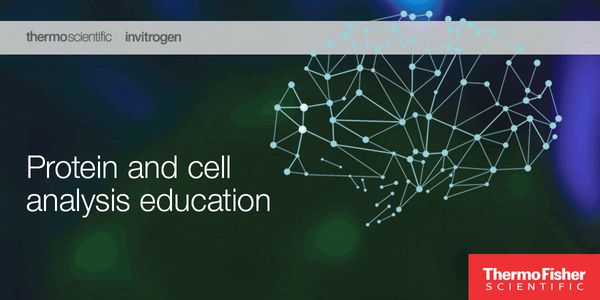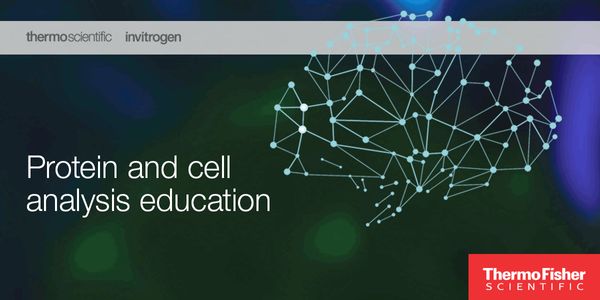Primary Cells
A primary cell is a battery that is designed to be used once and discarded, and not recharged with electricity and reused like a secondary cell. In general, the electrochemical reaction occurring in the cell is not reversible, rendering the cell unrechargeable.
-
DEC 06, 2018 | 7:00 AMDATE: December 06, 2018TIME: 7:00AM PSTHigh-throughput confocal microscopy has changed the way drug screening can be performed, by enabling the detection of single-cell pheno...DEC 05, 2018 | 8:00 PMDATE: December 05, 2018TIME: 08:00 PSTWhat is desperately needed are methods to detect cells that cause metastasis–known as cancer stem cells (CSC), a subpopulation of...DEC 05, 2018 | 7:00 AMDATE: December 05, 2018TIME: 07:00 PSTWhat is desperately needed are methods to detect cells that cause metastasis–known as cancer stem cells (CSC), a subpopulation of...DEC 04, 2018 | 7:00 AMDATE: December 4, 2018TIME: 4:00pm CET PSCs represent an important tool in a wide range of applications, including basic research, disease...DEC 03, 2018 | 11:00 PMDATE: December 4, 2018TIME: 8:00am CET PSCs represent an important tool in a wide range of applications, including basic research, disease...NOV 29, 2018 | 9:00 AMDATE: November 29, 2018TIME: 9:00AM PDTAn overview of primary immune deficiency disorders (PID) and laboratory testing for PIDPrimary immune deficiencies (PIDs), oth...NOV 15, 2018 | 4:00 AMDevelopment of physiologically relevant cellular models, with strong translatability to human pathophysiology, is critical for identification and validation of novel therapeutic targets. Cell...NOV 13, 2018 | 6:00 AMDATE: November 13,2018TIME: 3:00pm CET, 7:30pm IST, 06:00am PST The assessment of cell health and cellular responses after experimental manipulation continue to be a very important...NOV 06, 2018 | 12:00 AMThe last decade has seen a significant shift in the way that mammalian cells are used in biomedical science. Researchers are increasingly turning from simple, reductionist recombinant cells t...NOV 05, 2018 | 12:00 AMBiomedical researchers are increasingly using advanced human cell models for translational biology and therapeutic discovery studies. These include patient-specific samples, cultured micro-ti...NOV 02, 2018 | 12:00 AMDespite exciting recent developments in neuroscience, identifying novel, truly effective treatments for patients with neurological and psychiatric conditions remains highly challenging. There...NOV 01, 2018 | 12:00 AMDeriving deeper biological insight & improving productivity in immune-cell biologyThe most common in vitro methods for immunologists to analyze cells of the immune system are flow cyt...As the most common female malignancy, breast cancer is the most likely reason that a woman will die of cancer around the world. Breast cancer mortality has dropped in the U.S. by 35% since 19...Speaker: Benjamin Anderson, MD
Lung cancer is the leading cause of cancer-related mortality worldwide. Large-scale sequencing studies have revealed the complex genomic landscape of NSCLC and genomic differences between lun...
Speaker:
Nicholas McGranahan, PhD
Two projects looking at novel approaches to targeting inflammatory breast cancer will be presented. Inflammatory breast cancer (IBC) is a unique, understudied, and most lethal subtype account...
Speaker:
Kevin Williams, PhD
The oncogenic transcription factor c-MYC (MYC) is deregulated, and often overexpressed, in more than 50% of cancers. MYC deregulation is associated with poor prognosis and aggressive disease,...
Speaker:
Jason De Melo, PhD
In the past two decades a small number of infrequently dividing cells have been proposed as the source of multi-drug resistance during cancer treatment. These cells identified by their expres...
Speaker:
Krastan Blagoev, PhD
PacBio Sequencing simultaneously provides long sequence reads, high consensus accuracy, minimal sequence bias, and methylation detection. I will highlight new advances and updates on applying...
Speaker:
Jonas Korlach, PhD
To date the anatomic extent of tumor (TNM-classification) has been by far the most important factors to predict the prognosis of cancer patients. However, this classification provides limited...
Speaker:
Jerome Galon, PhD
RNA sequencing unlocks the mysteries hidden in the transcriptome. Whether your goal is gene expression analysis, gene fusion analysis, SNP analysis or miRNA expression analysis, achieving hig...
Speaker:
Jonathan Shaffer, PhD, MBA
























